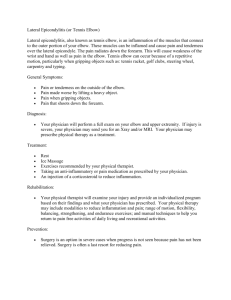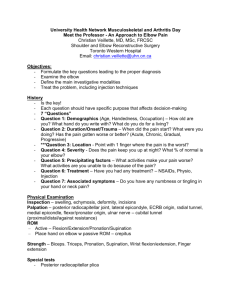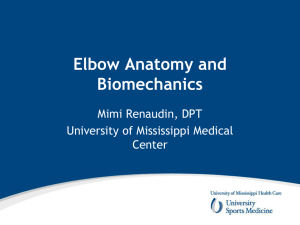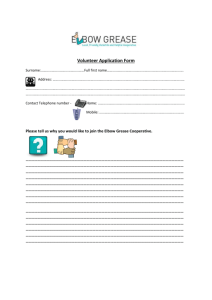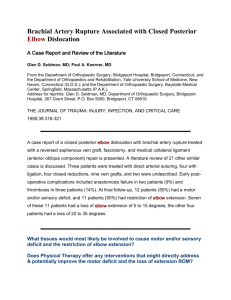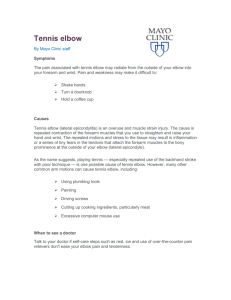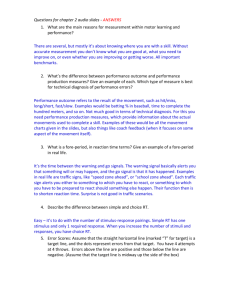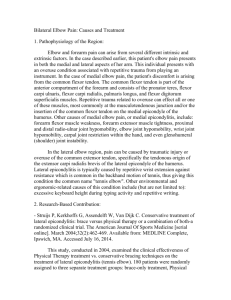Quiz #1, 2002
advertisement
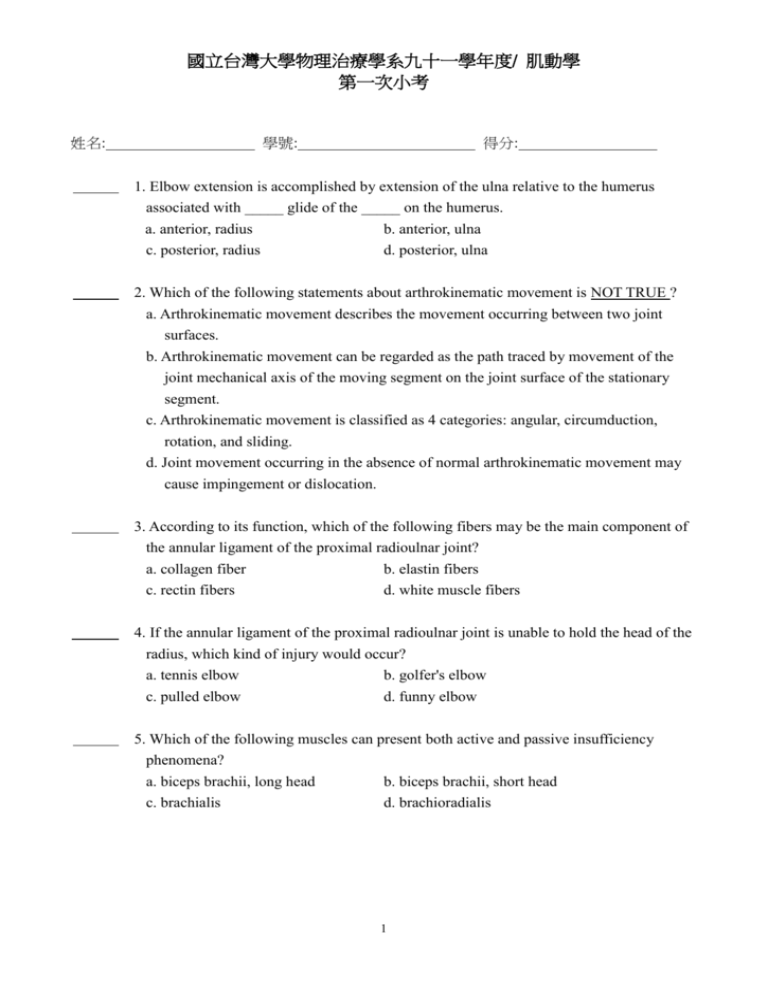
國立台灣大學物理治療學系九十一學年度/ 肌動學 第一次小考 姓名: 學號: 得分: 1. Elbow extension is accomplished by extension of the ulna relative to the humerus associated with _____ glide of the _____ on the humerus. a. anterior, radius b. anterior, ulna c. posterior, radius d. posterior, ulna 2. Which of the following statements about arthrokinematic movement is NOT TRUE ? a. Arthrokinematic movement describes the movement occurring between two joint surfaces. b. Arthrokinematic movement can be regarded as the path traced by movement of the joint mechanical axis of the moving segment on the joint surface of the stationary segment. c. Arthrokinematic movement is classified as 4 categories: angular, circumduction, rotation, and sliding. d. Joint movement occurring in the absence of normal arthrokinematic movement may cause impingement or dislocation. 3. According to its function, which of the following fibers may be the main component of the annular ligament of the proximal radioulnar joint? a. collagen fiber b. elastin fibers c. rectin fibers d. white muscle fibers 4. If the annular ligament of the proximal radioulnar joint is unable to hold the head of the radius, which kind of injury would occur? a. tennis elbow b. golfer's elbow c. pulled elbow d. funny elbow 5. Which of the following muscles can present both active and passive insufficiency phenomena? a. biceps brachii, long head b. biceps brachii, short head c. brachialis d. brachioradialis 1 國立台灣大學物理治療學系九十一學年度/ 肌動學 第一次小考 6. A skeletal muscle generates _____ maximum tension during eccentric contraction if the motion speed increases a. greater b. less c. equal d. (no answer because it depends on type of muscle fibers) 7. When a person stands up using the assistance of the armrest (扶手) of a chair, the motion occurs at the elbow joint is _____ and the motion is a(n) _____ of motion . a. elbow flexion, open kinematic chain b. elbow flexion, closed kinematic chain c. elbow extension, open kinematic chain d. elbow extension, closed kinematic chain 8. Same motion as question #7, the _____ muscle is responsible for this motion, which works _____. a. elbow flexor, concentrically b. elbow flexor, eccentrically c. elbow extensor, concentrically d. elbow extensor, eccentrically 9. Same motion as question #7, the motion occurs at the knee joint is taken placed on the _____ and the axis of rotation for this motion is _____ . a. sagittal plane, sagittal axis b. sagittal plane, frontal axis c. frontal plane, sagittal axis d. frontal plane, frontal axis 10. Same motion as question #7, the muscle contraction responsible for the knee motion is _____ . a. eccentric contraction of the knee flexor b. concentric contraction of the knee flexor c. eccentric contraction of the knee extensor d. concentric contraction of the knee extensor 2
